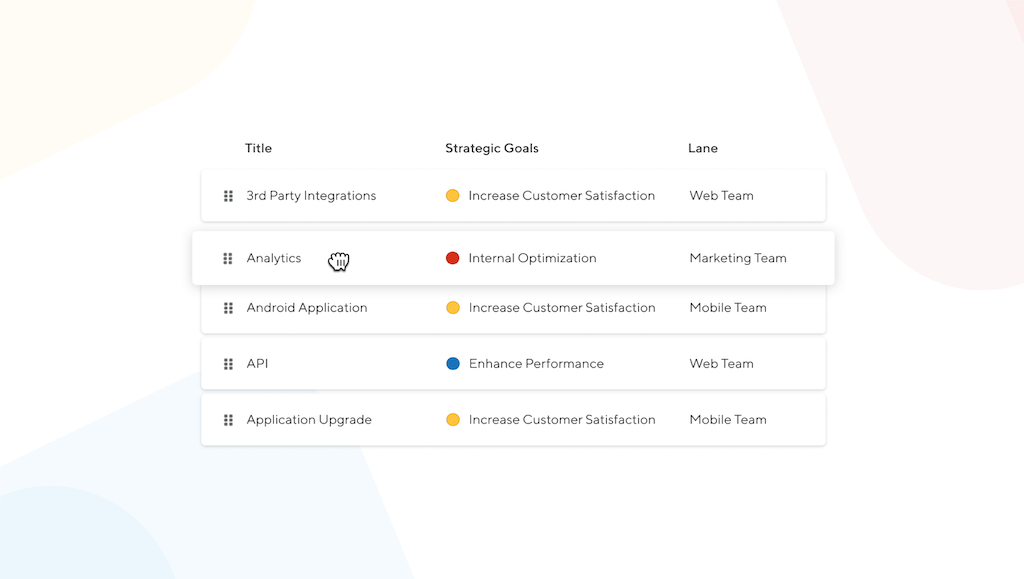Every individual has a unique way they perceive and interact with the world around them. Recent reports claim that diverse organizations outperform their competitors by 35%, according to a recent report by McKinsey & Company. The report also concluded that gender-diverse organizations outperform their nearest competitor by 15%. McKinsey & Company’s report proves that product managers need to create an equitable user experience for their customers.
Throughout life, we bring our preconceptions, biases, fluencies, capabilities to the table. As a consumer, that’s usually not a huge problem. We find ourselves judging our own experiences, purchases, and solutions. If a product doesn’t meet our needs, we can find something more suitable for our needs.
Of course, not all individuals have the freedom of choice. When your boss requests that you use the new ERP system, workplace etiquette requires you to follow up on the request. When the bus or subway, or train pulls up to the stop, we can’t request a different model that’s a better fit. We must do our jobs and get to our destinations.
So what happens when that ERP system uses terminology employees don’t understand? And what if the bus doesn’t have a lift for our wheelchair?
Unfortunately, users may find themselves in a precarious situation due to decisions made by a product team. Software that remains intuitive and self-explanatory to novice users remains the most accessible. Product managers who do not account for these may get left behind by a market inclined to buy a product from a fair organization.
What Is an Equitable User Experience?
You can’t expect to make everyone happy all of the time. Product managers know this self-evident truth quite well.
That’s why we define our target markets and user personas. Product managers understand that building a product that satisfies everyone remains impossible. Chasing after all those edge cases leads to ballooning costs and lengthy delays for increasingly diminishing returns.
Why is an equitable user experience important?
Our ability to dismiss different cohorts can drive us to whittle down our total addressable market. An effective manager who utilizes a product roadmapping tool to strategize with their product team maintains a viable product. Product managers ensure that the product supports the financial stability of the organization. Moreover, they rule out unlikely use cases and vertical markets that don’t align with our strategy.
As product managers, we have to make choices that narrow the usability of our products. These choices don’t end with unusual applications. A product manager’s decision can increase the degree of difficulty for usersProduct teams rarely set out to create a product for a small subsection of the population. Instead, we would like to provide our customers with the best product possible.
Why should you broaden the scope of your product?
Understanding the scope of your product influences the downstream decisions. As product managers, we understand the importance of thinking about who out there could use our product. When we do not broaden our market share, we isolate many subsections of society.
We often don’t realize how limiting those decisions might be. When we look around at our peers, our friends, our neighborhoods, and our families, we only see a sliver of the full population. We design for the “average consumer, ”which remains a flawed concept. Product teams need to develop products for a range of physical, cognitive, sensory, cultural, and socioeconomic variances.
Furthermore, your product should create a fair user experience. Oftentimes product teams fail to solve use cases or accommodate everyone. A product’s financial viability may also cause issues. As a product manager, you might determine that costs limit your ability to create a full user-friendly experience.
Developing a More Equitable and Inclusive Product Experience
Brittany Edwards—digital product manager and co-founder of Incorp[HER]ated—believes product teams must think beyond the types of people they see in the office. Some of this comes with who we choose to hire into our product teams, to begin with.
“If you don’t have a diverse organization and you’re not sure about what you don’t know or aren’t ready to acknowledge it, then the research you do is where you’re comfortable,” Edwards said in a recent webinar on Product Management Trends.
Companies need to break free of this unintentional-yet-ingrained limited perspective. Product teams must make a concerted effort to venture beyond their comfort zones.
“It’s all about identifying who your customer base truly is,” Edwards said, “Really push the boundaries of your definition of your customer.”
Product teams set out to understand what their users find difficult within the context of the product experience. That means talking to people, conducting usability sessions, and adopting best practices. If you search for opportunities to improve, things can always get better.
Of course, this inclusiveness can only go so far while still being practical. “It’s okay to be somewhat exclusive,” Edwards continued. “But acknowledge that and the risks that are associated with it.”
Potential roadblocks towards inclusiveness.
With so many avenues to increase inclusivity, there’s no shame in using an ROI as part of your analysis. If you can increase your target market by a few percentage points, you don’t have to worry if it’s fair. Instead, view every effort as a net positive.
You need to expand your potential market by doing the right thing. You should work to ensure your “starting point” remains unbiased. Challenging assumptions and remaining thoughtful in the design process.
Yet this only happens when there is time, space, and permission given to think about these unconscious defaults. As a product manager, you need to unpack the processes that lead to exclusion in the first place.
Accommodations Get Used in Unexpected Ways
The American Disabilities Act has been shaping public life since 1990. Federal and state regulations mandate that buildings provide ease of access for those with disabilities.
These sets of regulations make life easier for those suffering from a wide range of physical and mental limitations. They’re not the only ones who benefit. Parents with strollers also use those ramps, as well as shoppers with arms full of groceries.
ADA-driven changes provide value to everyone who uses them. They’re also an important reminder that product decisions made to accommodate one part of the market can end up benefiting many more people.
Some product managers may view the inclusion-driven activity as a costly exercise. Yet, it can enhance the user experience for much broader swaths of customers. Providing an option to increase the text size can attract older users, as well as those who have vision problems.
Expand Your Product’s Horizons
Your inclusive design can sometimes cause more problems and slow down innovation. For example, your product team may have to add in speech-to-text interfaces or develop a VR system that has accessibility features for individuals with a disability.
However, every step taken to make your product more accessible increases its utility for a broader set of users, creating organic growth opportunities for your product. Consumers will continue purchasing from you if they feel that the product provides accessibility, as well as functionality. By innovating the accessibility of your products, you have the opportunity to push your competitors towards producing an equitable product.
Over time, inclusive design becomes routine. “What about this?” and “what about that?” become welcome questions during ideation, design, and development.
Take the next steps toward creating an equitable user experience by:
- Hiring more diverse teams
- Talking to a wider variety of customers and potential users
- Creating space and time to hear about a broader set of concerns and issues
- Ensuring usability tests include different ages, races, shapes, sizes, genders, sexualities, geographies, educational levels, income ranges, and physical and cognitive capabilities
- Asking your teams what else can we do to make things simpler, more accessible, and friendlier to as many constituencies as possible
Inclusivity and equity are about more than paying lip service to vocal minorities or being politically correct. There are a billion people with disabilities. The LGBTQ community has $3.6 trillion in buying power. The U.S. population is more than 30% Black and Hispanic.
Lastly, it’s simply good business to broaden your target market, and the brands doing so are seeing positive returns on their commitments to this practice. Don’t be caught on the wrong side of history with a product designed to serve only a small array of society rather than a universal equitable user experience.




